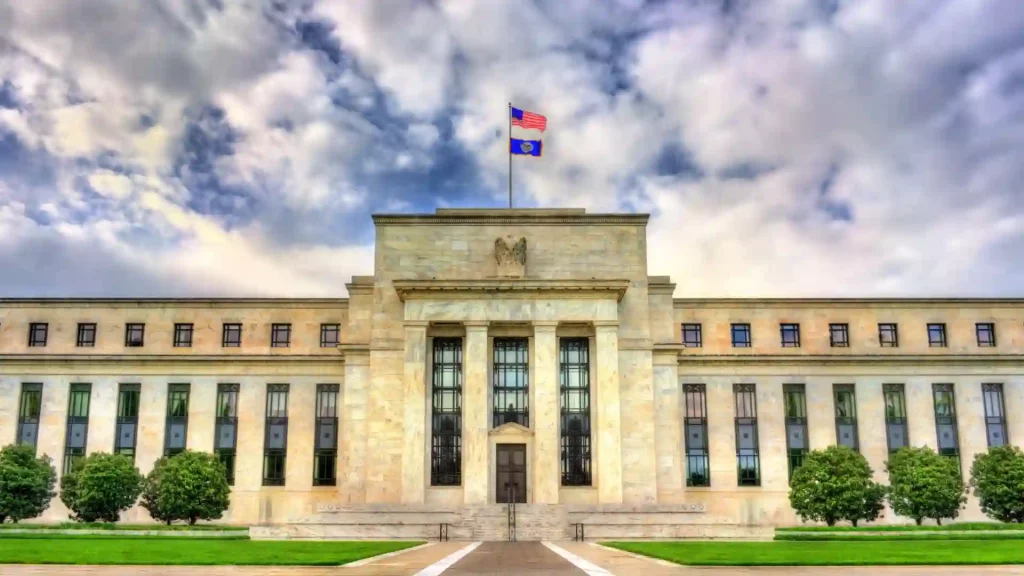US stocks were rising on Wednesday as investors looked forward to the Fed’s decision later in the day. The S&P index climbed by 0.7%, as recorded at 1:37 EST. The Dow Jones Industrial Average spiked by 231 points to 34,337 (0.7%).
The US Federal Reserve raised its short-term key internet rate by 50 basis points on Wednesday, December 14, after raising rates by a larger 75 basis points for the past four consecutive meetings. The Fed marks a new phase as it uses contractionary monetary policy yet again to pull an endgame on escalating inflation. The benchmark rate is at a 15-year high as the Federal Open Market Committee takes it up to a targeted range of 4.25% and 4.5%.
US stocks were rising on Wednesday as investors looked forward to the Fed’s decision later in the day. The S&P index climbed by 0.7%, as recorded at 1:37 EST. The Dow Jones Industrial Average spiked by 231 points to 34,337 (0.7%). Investors further look to their east side, where the Bank of England’s meeting with the European Central Bank will end on Thursday, indicating a 50 bps rise in points as well.
The benchmark rate hike will have a ripple effect on the economy, raising borrowing costs, adjustable mortgage rates, credit card interests, and other loans. Retired individuals are to reap benefits from their savings bank yields after years of lethargic returns.
How high will the key rate fly?
Global investors are keen to know when the progressive rate hikes will halt, thereby initiating the cutting of the benchmark. The total rate hike in 2022 was 425 BSP (4.25%). Rates are not expected to drop until 2023. Wall Street predicts yet another two rate hikes of 25 BSP each next year, increasing the terminal rate to 4.82% by May. The Fed rate will be cut to 4.1% by the end of 2024, according to economists.
A mild recessionary situation is forecasted for the next year. The Fed expects the economy to grow by 0.5% by the end of the year and then continue the same feeble growth in 2023 as against the September forecasts of 1.2%. The unemployment rate will increase from 3.7% to 4.6% by the end of 2023.
Will inflation find its way into 2024?
Annual inflation is expected to fall to 3.1% by the end of 2023 from 5.6% in October 2022. The earlier predictions for inflation figures by 2023 ended at 2.8%.
3.1% is a significant decline. However, the US’s vision to shrink the inflation to 2% remains out of the league as of now.
A CPI report issued on Tuesday painted the American inflation scenario presenting a subdued figure of 7.1%, bringing the rates down from 9.1% in June. A CPI report issued on Tuesday painted the American inflation scenario presenting a subdued figure of 7.1%, bringing the rates down from 9.1% in June, being a 40-year high.
This week’s Dollar show
The dollar rose against most currencies on Monday ahead of expectations that US inflation may have moderated in November. Since hitting a peak in September, the dollar index has subsequently declined by higher than 8%. The Euro traded at $1.0535 against the dollar on Monday. In afternoon trading, the Japanese yen fell 0.8% to 137.71 yen per dollar.
The dollar suffered massive losses on Tuesday against major rivals after the US Bureau of Labor Statistics published the inflation data. The Euro gained more than 100 pip on Tuesday. USD/JPY fell hard to 135.0 yen after pulling off a bullish action on Monday. The pound sterling reached a month-high of 1.2443 pounds on Tuesday.
As soon as the Fed’s decision was announced on Wednesday (7 pm UTC), GBP/USD fell sharply from a day high of 1.2440 to 1.2375 and then further to a day low of 1.2351. The EUR/USD fell from 1.0684 to a low of 1.0626 and again rose to 1.0693. The Japanese yen right before the rate hike stood at 134.89 yen and eventually rose to a day high of 135.98.
The US Fed is also engaging in some light quantitative tightening process, capping a total of $95 billion from proceeds of maturing bonds to roll off its balance sheet instead of reinvesting. A total of $332 billion has been wiped off the sheets since June, with the standing balance sheet figure standing at $8.63 trillion.
